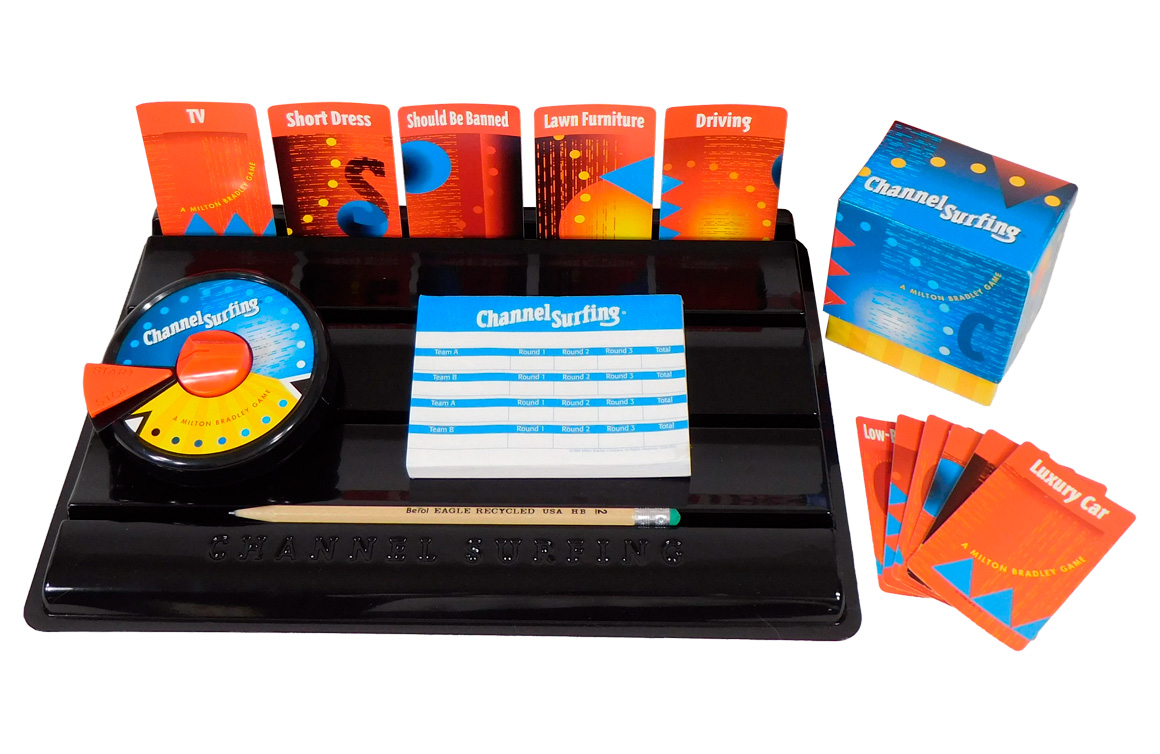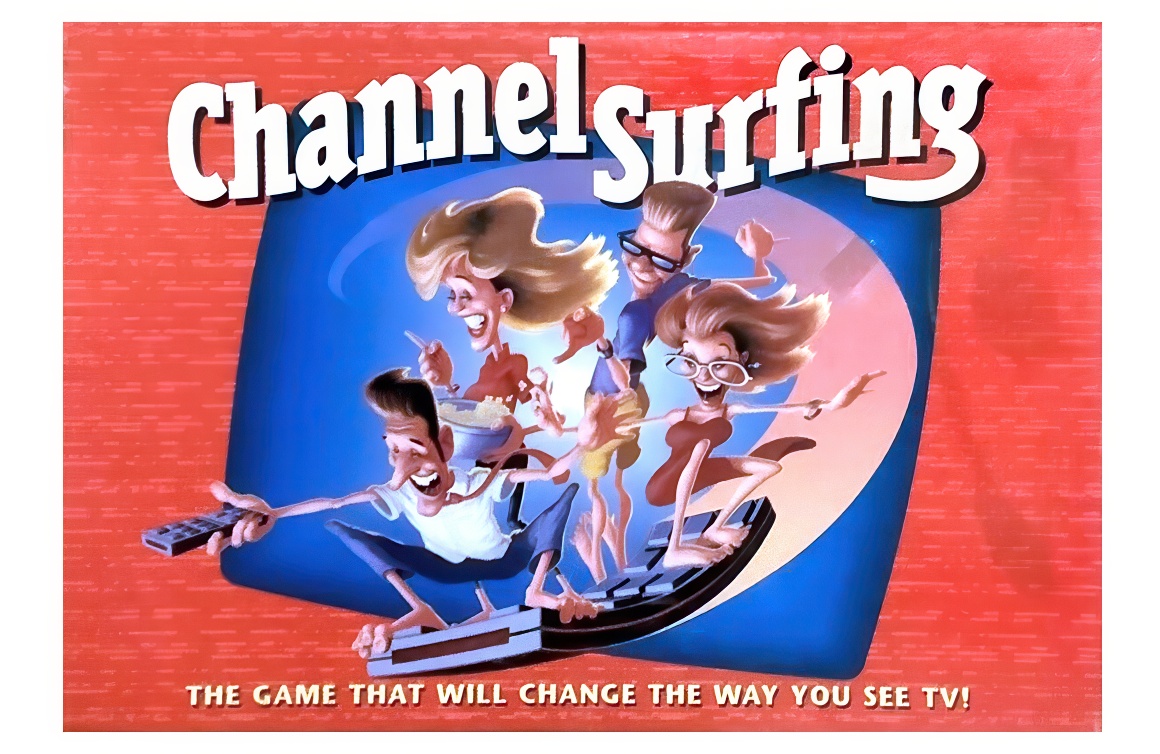“The game that will change the way you see TV!”
Released by Milton Bradley in 1994, the Channel Surfing game from Milton Bradley swapped a game board for a series of cards and a television set with remote to complete challenges and earn points.
GAMEPLAY
The object of the game was to match objects, characters, and scenarios on a series of cards with those found on television.
Players formed two teams and gathered around a television. Each team chose twelve cards. The cards had a red and a blue side. Teams determined which colour they wanted to play and placed the cards in the card rack.
A coin toss decided which team would channel surf for matches first. The other team took verification and timer duties. When the surfing team was ready to play, they set the television to channel two and the team declared, “Surf’s up!” The verifying team started the timer.
Working quickly, the surfing team scrolled up the channels in an effort to match the elements on their cards with what they observed on the screen. The cards included a bridge, money, a newscaster, a bystander, shouting, a sportscar, and other elements. The game challenged players’ observation skills and abstract thinking. For example, a card such as “net” could be interpreted as a hair net, bug net, or sports net. Clever teams who were quick to interpret the cards had an edge in the game. The verifying team had the opportunity to call out any suspect interpretations, making for lively debates.
When the timer stopped, the surfing team counted one point for every card they matched, and the verifying team got their chance to surf.
The team with the highest score after three rounds of play won the game.
Variants of the game accommodated two-player and solo play. In a two-player game, opponents tried to be the first to match an element and take the card off the rack. For solo games, the player tried to beat their previous score by matching an increasing number of cards before the timer ran out.
IN THE BOX
A complete game included 236 cards, a card rack, timer, and score pad. An instruction insert was also included. A television and remote control were not included.
COLLECTOR CONSIDERATIONS
Channel Surfing is just one example of a game that brings electronic components — such as screens — into gameplay. Titles such as Clue II: Murder in Disguise from Parker Brothers (1987), Star Trek: The Next Generation Interactive Video Board Game – A Klingon Challenge from Milton Bradley (1993), and Scene It? from Screenlife Games (2002) used screens and VHS technology to unfold the game. While VHS tapes don’t have a reputation for longevity and VHS players are echoes of the past, with a bit of creativity, Channel Surfing could be adapted for modern audiences with access to a streaming platform.
Note: If you buy something using the eBay link in this story, we may earn a small commission. Thank you for supporting independent toy journalism!


